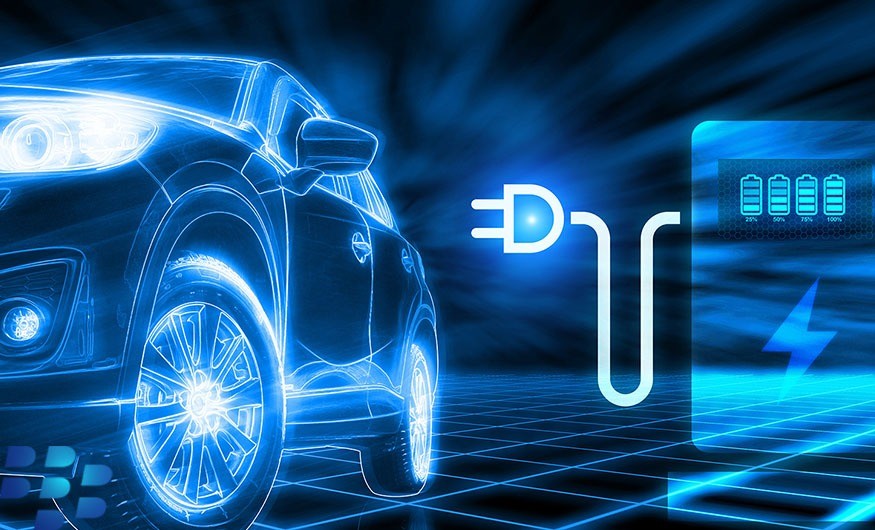
With the world moving faster and faster toward a sustainable future, innovation in the electric vehicle (EV) sector is leading the way. With significant improvements in technological improvements, EVs are now smart, networking globally building great initiatives, and reaching new heights of achievements.
However, cybersecurity is a serious issue that has arisen due to this increasing connectedness. It is critical to protect EVs' security and safety against cyberattacks to preserve public confidence and support the industry's continuous expansion.
The concerning trends observed in the EV Industry
- An estimated 64% of people worldwide are concerned about the potential for automotive hacking. This data underscores the urgent need for robust cybersecurity measures in the industry. As an IT company, we must address these worries to ensure trust and safety in the rapidly evolving world of connected vehicles.
- Research predicts the automotive cybersecurity market will experience a CAGR of 21.3% from 2021 to 2026, suggesting steady growth at a rate of 21.3% annually. The demand for cybersecurity products and services specifically designed for automobiles is growing at a notable rate, indicating that people are becoming increasingly aware of how critical it is to safeguard car systems against online threats and vulnerabilities.
- By 2025, 2/3 of new cars globally will have connected capabilities, increasing the need for cyber security in the EV industry. More demand for cyber security measures is predicted due to this move toward connected cars, particularly in the electric vehicle (EV) industry. The likelihood of cyberattacks aimed at vehicle systems and data rises with the popularity of connected cars, underscoring the necessity of putting strong cybersecurity measures in place to safeguard the integrity and security of EVs and their users.
- The average vehicle today includes more than 100 million lines of software code. The increasing level of software integration underscores a pivotal shift toward highly advanced and interconnected vehicles reliant on software for diverse operations. With the ascent of autonomous driving and electric vehicles, software's significance in modern vehicles is poised for further escalation, accentuating the imperative for ongoing innovation and rigorous software development practices in the automotive sector.
- Last but not least, the automotive industry is expected to invest $82 billion in cybersecurity by 2026. This considerable investment reflects the industry's acknowledgment of the crucial role cybersecurity plays in maintaining the integrity and security of contemporary cars and also highlights the industry's commitment to strengthening cybersecurity defenses against potential threats.

The risks of cybersecurity in the EV industry
- The convergence of automotive and information technology has paved the way for unprecedented levels of connectivity in EVs. But this has multiplied the risks from remote hacking and unauthorized access to critical systems to data breaches and privacy infringements, the potential risks are diverse and complex.
- EVs rely heavily on interconnected systems, including onboard computers, communication networks, and external interfaces such as mobile apps and charging stations. Software flaws, inadequate encryption, and weak security measures increase the likelihood of cyberattacks, which presents serious difficulties for EV makers and other stakeholders.
- While regulatory bodies have laid guidelines on EV vehicles, compliance to these rules is essential. To find and fix vulnerabilities in car systems, proactive risk assessment, threat modeling, and penetration, testing are crucial. This are often lacking which leads to vulnerable cases of cyber security in EVs.
The Ways to Mitigate these Risks
- Secure Software Development
Vulnerabilities can be minimized in EV software systems by following software development standards and implementing secure coding methods. Regularly performing static analysis, dynamic testing, and code reviews to find and fix possible security vulnerabilities.
- Encryption and Authentication
It is imperative to prioritize robust encryption and authentication in EV cybersecurity. Strong encryption shields data transmission, while robust authentication verifies user and device identities, fortifying against unauthorized access. Championing these measures ensures EV integrity and builds trust in an interconnected world.
- Intrusion Detection Systems (IDS)
Use IDS programs to keep an eye on network activity and spot unusual activity that could point to a cyberattack. Real-time alerts from IDS to possible security breaches allow system administrators to take immediate action and begin mitigation efforts.
- Network segmentation
To distinguish important systems from less secure components, including infotainment systems and external interfaces, divide EV networks into segments. Network segmentation aids in containing possible cyberattacks and lessening their effects by restricting access to important operations and data.
- Patch management and security updates
To mitigate new attacks and fix known vulnerabilities, update EV firmware and software on a regular basis. To guarantee that security updates are deployed on time to all EV components, including onboard systems and external interfaces, implement strong patch management procedures.

Conclusion
As the electric vehicle (EV) industry continues to advance, maintaining stringent cybersecurity measures becomes increasingly critical. The intricate architecture of EV systems, combined with the escalating capabilities of cyber threats, demands a fortified defense strategy to protect against potential cyber-attacks. The adoption of advanced cybersecurity frameworks, enhanced multi-stakeholder collaboration, and clear regulatory guidelines is the need of the hour. By prioritizing these elements, the EV industry can address vulnerabilities proactively, safeguarding consumer trust and ensuring secure connected mobility in this rapidly evolving landscape.






